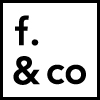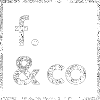18. Talents
One word binds together all aspects of the creative economy explored so far at the Summer School on management of creativity: talent.
In fact, what characterizes this "creative economy" is the fact that talent has become the main source of significant added value to organizations. It may seem more obvious in "pure" creative companies like Ubisoft and Realisations.net, whose business is to constantly generate new creative outputs and where singular talents operate the magic of the brand. But even so, talent management is easier said than done.
Organizational challenges
At Cirque du Soleil, talent management is deployed through casting and training processes. Over the years, the live performance behemoth has gained impressive expertise in artist management in most circus disciplines but one. Clowns seem to have fallen through the cracks, in large part due to the idiosyncracies of their art, closer to raw emotional expression than performance per se. To alleviate this problem, the Casting and Performance Department designed a custom recruitment and training program with the clear objective of giving more value to this particular artistic community and facilitating their integration within the company. However, the objectives were not fully met: whereas the attraction of new talents proved successful, retention and integration of clown yielded weaker returns.
Rare talents provide competitve advantage but are not the apanage of creative organizations. More traditional production or even service industries like the medical field, as well as governmental institutions rely more and more on talented individuals to constantly renew their innovation pipeline. As we have seen at the Roca Gallery in Barcelona, what appears to be simply a manufacturer of bathroom equipment proves to be a design and innovation powerhouse. Talented employees are the backbone of the Innovation Lab and reinforce the organization lead in its industry.
But at a time where competition for talents is fiercer than ever, driven by the globalization of markets and intensifed demand for innovation, how can organizations and particularly HR departments attract and, more importantly, retain talented recruits?
Public policy issue
According to Montserrat Pareja-Eastaway, professor ar the University of Barcelona, even cities compete for the best talents. Her PPP-CC-T model – in opposition to Richard Florida's 3Ts of Talent, Technology and Tolerance – explains why individuals decide to live in one city instead of another. Contrary to the common cliché about creative cities, "talents are not attracted by diverse, tolerant milieux and ameneties," but more by Pathways, Places and Personal networks. These factors, as well as the Classic Conditions of job opportunities and quality infrastructure, have more impact on employment decisions than competitive pay. Soft factors, like salaries and social advantages for instance, may have more influence on retention. In the end, there can be no talent strategy without Tailored policies.
If personal networks are one of the most valuable conditions for talent retention in cities, what are their pertinence to organizations? Looking at the Cirque du Soleil case through a more social lens, perhaps the development of personal ties through better group cohesiveness is the key to stronger organizational integration. Could the solution be much simpler than managers would like to think? Could social relations do more for profesionnal fulfillment than any other HR program? Going back to the roots of it all, before the homo economicus buzzwords, isn't the human being first and foremost a social creature?
This text is part of a series written in the context of the Fifth edition of the Montreal-Barcelona Summer School on Management of Creativity, organized by Mosaic HEC Montréal and Universitat Barcelona, July 9 to 24, 2013.
Illustration by Studio 923a. Read all posts in the series at blog.fandco.ca/yulbcn.


